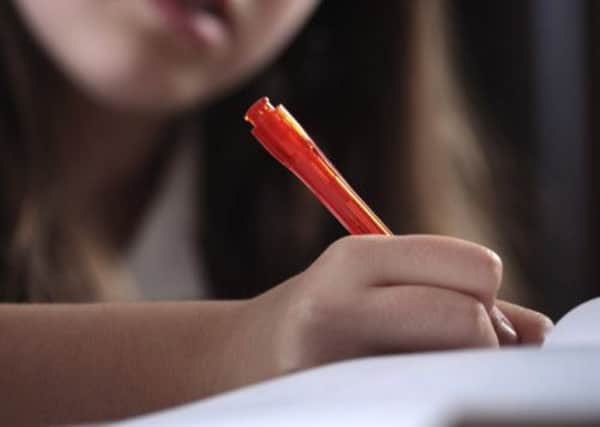One boy in four now has special needs


Government statistics show that boys are nearly twice as likely as girls to be considered to have speech and language needs, learning difficulties, behaviour issues, visual, hearing or multi-sensory impairments, physical disabilities or a form of autism.
Overall, almost one pupil in five across England and in Yorkshire – across both state and private schools – has some type of special educational need (SEN).
Advertisement
Hide AdAdvertisement
Hide AdMost of these, however, do not have a statement setting out their needs which are given in the most serious cases.
The figures published yesterday show the percentage of pupils with a statement nationally has remained constant at 2.8 per cent since 2009. The number of state school pupils with SEN but without a statement has declined slightly compared with last year from 17 per cent in 2012 to 16 per cent this year.
In Yorkshire 18.5 per cent of pupils have some form of SEN, which is slightly less than the national average, Sheffield has the region’s highest proportion of pupils with SEN at 22.1 per cent. It is one of six authority areas in the region where more than one-in-five pupils have SEN.
In Rotherham the figure is 21.1 per cent, in Hull it is 21 per cent, in North East Lincolnshire the proportion is 20.7 per cent, in North Lincolnshire 20.6 per cent, and in Barnsley 20.2 per cent.
Advertisement
Hide AdAdvertisement
Hide AdA Department for Education spokeswoman said: “The decline in the number of children without a SEN statement suggests schools are getting better at identifying both children with SEN and helping them to progress.
“It’s important that children with the most severe and complex needs get the right support so that they can achieve their potential.
“The steady percentage of children with statements shows councils are continuing to ensure that these children receive the extra assistance they need.”
A breakdown of the data, published by the Department for Education (DfE) shows that in state primary, secondary and special schools, nearly a quarter (24.3 per cent of boys were judged to have special needs, compared with around one-in-seven (13.7 per cent) of girls.
Advertisement
Hide AdAdvertisement
Hide AdThe figures show that as of January, there about 1.5 million children at all schools (18.7) per cent of school pupils) who were classed as SEN.
This has dropped since last year, when about 1.6 million pupils fell into an SEN category.
The figures show that in state-funded primary schools the three most frequent types of SEN were speech, language and communication needs at 30.6 per cent, moderate learning difficulties at 20.3 per cent and behaviour, emotional and social difficulties at 18.4 per cent
In state-funded secondary schools the three most frequent types of SEN were behaviour, emotional and social difficulties at 27.7 per cent, moderate learning difficulty with 21.6 per cent and specific learning difficulty with 15.8 per cent.
Advertisement
Hide AdAdvertisement
Hide AdIn all special schools the three most frequent types of need were severe learning difficulties at 24.7 per cent, autistic spectrum disorders at 21.5 per cent and moderate learning difficulties with 17.8 per cent.
Concerns have been raised in the past that pupils have been wrongly labelled as SEN. In 2010, a report by Ofsted warned that many children were being wrongly identified as having SEN because of poor teaching.
Separate government data published last week found that pupils with a statement of special needs are about eight times more likely to be expelled than their peers, while youngsters with SEN, but no statement are about 11 times more likely to receive a permanent exclusion.
It also said youngsters with SEN statements are six times more likely than their classmates to be suspended at least once.